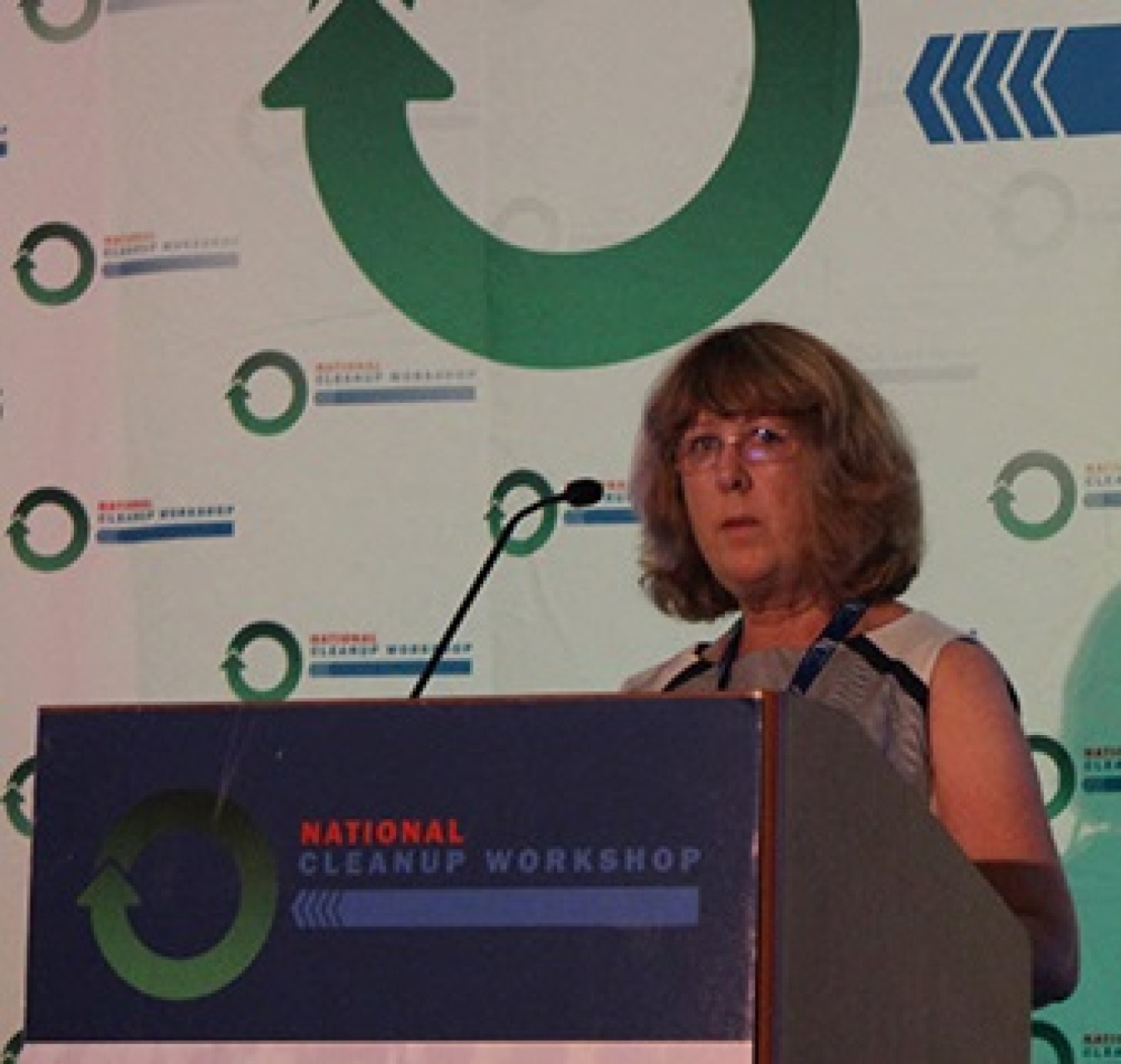A panel of DOE federal and contractor leaders discussed the future of the Savannah River Site (SRS) at this year’s National Cleanup Workshop.
Office of Environmental Management
September 17, 2019ALEXANDRIA, Va. – A panel of DOE federal and contractor leaders discussed the future of the Savannah River Site (SRS) at this year’s National Cleanup Workshop.
As SRS marks its 70-year anniversary next year, it continues to support national security missions while advancing environmental stewardship and cleanup, waste management, and nuclear materials management, said Betsy Connell, EM Associate Principal Deputy Assistant Secretary for Regulatory and Policy Affairs, who moderated the panel.
Connell highlighted EM successes at SRS, including the deactivation & decommissioning of buildings and reactors, remediation of soil and groundwater, and tank waste cleanup. She noted that SRS has the only tank waste program in the DOE complex with a complete cradle-to-grave cycle for liquid low-level waste from spent fuel reprocessing and the only operating vitrification plant for high-level waste. In addition, SRS has successfully closed eight of the 51 approximately 1-million-gallon tanks and disposed of nearly 18 million gallons of low-level waste, which have been solidified in a cement matrix.

“This really shows what can be accomplished through partnerships, partnerships with contractors, the community, and regulators,” Connell said. “The innovation in tank cleaning and closure can be attributed to the exceptional work that continues to be done by the tank closure program, along with all the groundbreaking research carried out at the Savannah River National Laboratory (SRNL).”
In the early portion of the panel session, a video was shown that provided a snapshot of SRS and its future operations. Watch the video here.
Panelist T.L. Cubbage, Deputy Under Secretary for Science, emphasized the importance of innovation and technology in the EM program, which can be supported by a new, recently announced Artificial Intelligence office in the Department.
Cubbage commended work on high-level waste at SRS and SRNL’s support to Japan in the cleanup of the 2011 Fukushima Daiichi nuclear reactor accident. He acknowledged the significance of SRNL beyond its role as the EM national laboratory through its work for other agencies.
Michael Budney, manager of the DOE Savannah River Operations Office, said the site’s liquid waste, H Canyon, and spent nuclear fuel missions remain a focus. He added that he’s proud of contractors at the site and their efforts to hire locally, which helps address attrition.
Nicole Nelson-Jean, manager of the National Nuclear Security Administration (NNSA) Savannah River Field Office, discussed SRS’s role in national security and strategic planning documents NNSA recently developed.
Tritium missions and the proposed plutonium pit production planning efforts continue, and she acknowledged the successful dilute-and-dispose efforts and removal of one metric ton of plutonium from South Carolina. Nelson-Jean also shared recent NNSA contributions to the community around SRS and the commitment to continue community engagement and support of STEM (science, technology, engineering, and math) education.
Stuart MacVean, president of Savannah River Nuclear Solutions (SRNS), the SRS management and operations contractor, said it’s an exciting time at SRS and work accomplished over the past 10 years, such as the 85-percent footprint reduction, set the site up for the future.
MacVean said that while the EM mission remains a focus, SRNS is heading toward supporting EM and NNSA missions through a 50-50 split. MacVean also talked about hiring to support current and future missions. He said that over half of the current workforce has been at the site less than six years and that efforts are in place to provide knowledge transfer and training.
Vahid Majidi, SRNL director, said SRNL was designated a national lab in 2004 and has been on a journey of growth to build on the lab’s legacy and pedigree. He described the opportunity to use the site to develop programs and to identify key elements and best tools.
Tom Foster, president and project manager for Savannah River Remediation (SRR), the site’s liquid waste contractor, said that SRR recently celebrated a 10-year anniversary and the completion of 4,000 canisters of radioactive glass. He noted that a review of the liquid waste process and the Salt Waste Processing Facility will drive completion of the liquid waste mission.
Rick McLeod, president and CEO of the SRS Community Reuse Organization (SRSCRO), gave an overview of SRSCRO’s work, and its impact to the community and the region’s economic development. He also shared SRSCRO’s successes and discussed its efforts as a conduit for DOE and NNSA support for workforce development efforts in the region.

